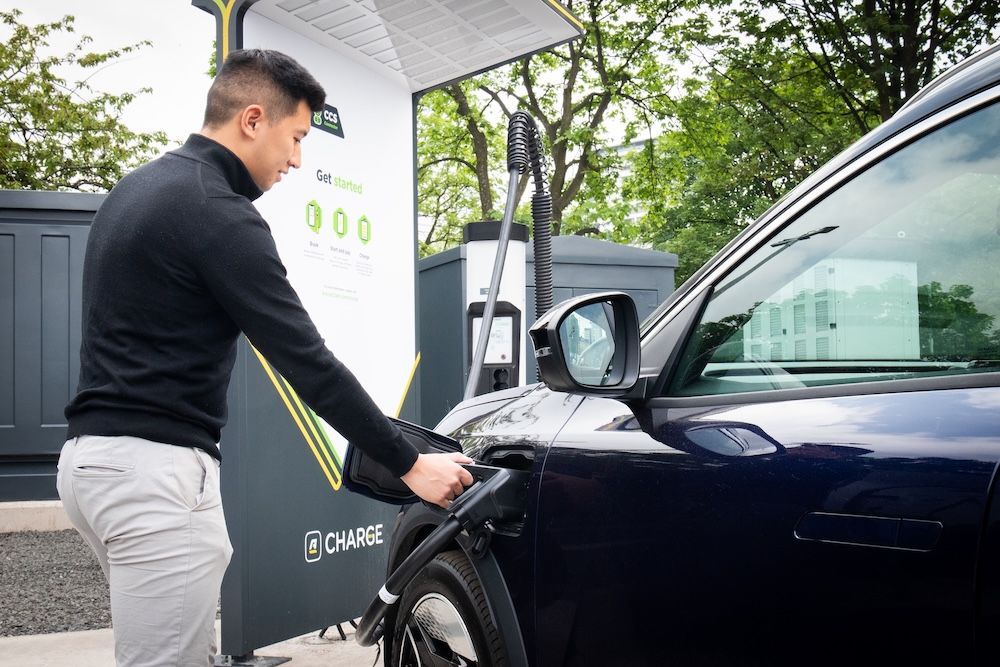Manchester University NHS Foundation Trust (MFT) saw an average reduction in electricity costs of 6p per kWh when using Indra’s Vehicle-to-Grid (V2G) bi-directional electric vehicle (EV) chargers.
Indra has announced the results from the two-year study which was delivered in partnership with the Trust and Hitachi ZeroCarbon, part of Hitachi Europe. The study, which ended in June 2022, explored the potential cost savings and added benefits of V2G charging for commercial fleets.
The trial involved five Hitachi-funded V2G units, developed by Indra, at sites across Withington Community Hospital and Trafford General Hospital. Results from the trial period show that the Foundation Trust was able to reduce its peak hour use electricity costs by £90 a month, thanks to an average reduction of 6p per kWh, which, over the course of a year, translates into a saving of £1,075.
As well as lowering energy bills, the Indra V2G bi-directional electric vehicle (EV) chargers also helped both hospitals reduce their carbon footprint by assisting the national electricity network with load demand by scheduling the hospital vehicles to charge off peak. Results also suggest that the V2G charging had a positive effect on the battery health of the electric vehicle fleet.
Thanks to the pioneering bi-directional technology developed by Indra in the V2G chargers, the fleet of electric pharmacy vehicles were programmed to charge during off-peak periods and then discharge energy from the vehicle batteries back into the hospitals when the Foundation’s electricity demands and cost were at their highest.
In its role as project lead, Hitachi ZeroCarbon designed the various trials, testing different charging scenarios and analysed the data captured. Indra designed, built and installed the units and provided maintenance and data acquisition support for the study.
Speaking about the success of the trial, Indra founder and chief technology officer, Mike Schooling said: “We are delighted to see our V2G units being used to prove this technology in a real world setting to help the hospitals meet their sustainability targets and reduce their energy costs. This is especially important at a time of sustained energy price increases.
“Energy demand is only going to increase and so it is vital that we can manage energy in a smart and effective way. We believe the key to reaching zero emissions lies in optimising the use and flow of renewable energy and that V2G technology is a game-changer in enabling us to unlock the potential of EVs as powerful portable energy sources.”
John Whybrow, Hitachi ZeroCarbon’s New Business Incubation Lead, said: “Electrifying fleets is the way forward in helping the UK achieve its net zero ambitions and Greater Manchester is leading the pack with its low carbon energy and transport initiatives. The data we gather with this project will be used to show how V2G technologies can play their part in balancing the grid as we use more renewable energy across the UK.”
During weekdays, the vehicles were used throughout the day between 7am and 3pm, then returned to be connected to the V2G chargers at all other times. Between 5pm and 7pm the vehicle batteries were discharged down to a minimum 30% state of charge – a figure chosen to preserve long-term battery health and ensure the vehicles were always available on demand for hospital use.
The vehicle batteries are discharged during peak electricity demand within the hospitals. By using the energy in the EV batteries to feed back into the Grid, Indra’s chargers were able to reduce energy use by up to 10kWh per charger during the peak periods, reducing the cost of the Trust’s electricity usage by an average of six pence per kWh and significantly reducing carbon during peak times. That works out at a monthly saving of £18 a vehicle for the trial’s fleet of five vans.
Finally, at 11pm the V2G chargers were programmed to begin the process of fully charging the EVs to 100 percent, ensuring they were ready to resume their duties the following morning. Not only were the batteries on the EVs charged at the lowest cost tariff and carbon intensity, but the demand from the building was also at its lowest.
At the conclusion of the two-year trial, the key benefits of the technology were found to be the ability for EV users to access energy at off peak tariffs and when greater renewable energy is available, plus sell it back to the Grid during times of peak energy demand. This assists the Grid with managing energy load and reduces the need for high carbon energy sources to be brought online. It also suggests that with just 10 to 15Indra V2G chargers, the Foundation Trust would be able to dramatically reduce its use of grid-supplied electricity between 5pm and 7pm to zero.
Image courtesy of Shutterstock.








